Concrete and the hard-core bacteria that stubbornly persist within
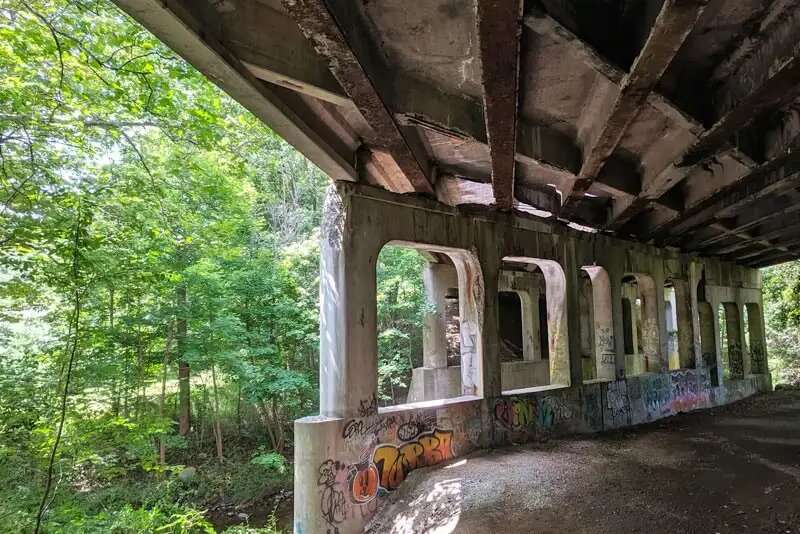
It's a most unlikely habitat and really has no creature comforts to recommend it. But University of Delaware researcher Julie Maresca and students in her lab are studying concrete and the life that stubbornly persists within.
Yes, life happens in concrete, despite its hard, dry, salty environment and despite the typical pH of about 12.5, which makes it about as inviting as moving into a bottle of bleach or oven cleaner.
Some hard-core bacteria—for example, Psychrobacter, which are found in Antarctic ice, among other challenging places—just won't take "no" for an answer.
And because concrete is ubiquitous—the most common building material in the world—anyone concerned with the health of buildings, roads, bridges and other concrete structures should take note of these microbial masses.
In a new study published by the American Society for Microbiology, Maresca, associate professor of civil and environmental engineering, and her students demonstrate that even in a harsh concrete habitat, bacterial communities can survive, thrive and do what all living things do—change. Such change can have important implications for the degradation and potential repair of concrete structures.
Researchers have long known that microbes and concrete have a love-hate relationship. But their study has been mostly of surface bacteria, the sort that is introduced to concrete after it has been poured.
Maresca's studies have gone beyond the surface to study the bacteria within, the microbes that either hitched a ride on the gravel and sand included in the concrete mix or seeped in through cracks. Her lab's previous research had shown that small numbers of bacteria were there and their DNA could be extracted.
Now she and her students have shown how time and weather affect bacterial communities living in concrete.
Among the team's findings:
- The diversity of bacteria declined over time, but some had seasonal bounces.
- Bacterial communities within concrete could provide early warning of alkali-silica reactions that degrade concrete but are difficult to detect. Typically, these reactions are only recognized when cracks are forming in the concrete.
- Bacteria have the potential to provide "biorepair" of concrete, but which kinds are up to the task? Some produce calcium carbonate, a substance that can fill in cracks and pores in concrete. Previous research on this process shows that many bacteria capable of biorepair can only survive in concrete for a month or two.
"There is not a lot of life in concrete," Maresca said. "It has a very low biomass."
But what if we knew which kind of bacteria survive and thrive there and which could be recruited in the effort to improve the world's infrastructure?
The need for new approaches to concrete maintenance and repair is clear.
In a 2020 report, the Federal Highway Administration listed the condition of more than 45,000 of the nation's 618,456 bridges as "poor." These bridges are considered structurally deficient, which is defined as "needing significant maintenance attention, rehabilitation or replacement."
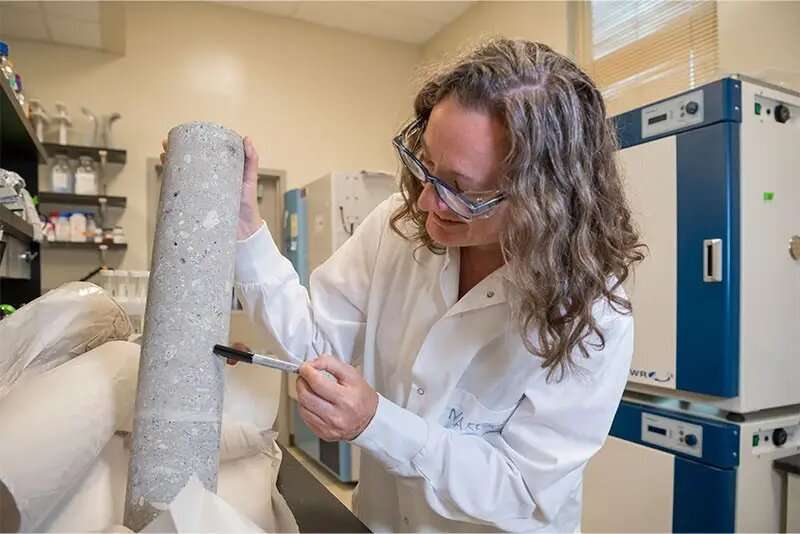
The condition of other concrete structures also has been of great concern, especially since the devastating partial collapse of a beachfront condominium near Miami, Florida, on June 24, a disaster that claimed 98 lives. Though the cause has not yet been determined, inspectors three years earlier had identified damaged concrete as a significant structural problem that needed attention.
No one is saying (yet) that bacteria will help to address such problems. They might—someday—but much more research is needed.
To study these concrete-based bacterial communities, Maresca's students poured concrete samples into 40 cylinders, each about the size of a one-liter bottle. Two kinds of mixes were used. Some cylinders included only standard concrete mixes, prone to degradation from alkali-silica reactions. Some used mixes with fly ash to reduce such reactions. Control samples were made with sterilized glass beads, allowing researchers to see how much contaminating DNA was introduced in the lab.
The cylinders were placed on the roof of UD's Spencer Lab. DNA samples were collected about every six weeks over a two-year period. Then the DNA was sequenced and analyzed.
Maresca, a microbiologist who studies bacteria in natural and engineered environments, did not have concrete on her list of potential natural environments to study when she joined the UD faculty in 2011.
But almost as soon as she arrived, another new faculty member—Thomas Schumacher, a civil engineer now at Portland State—showed up in her office. He studied bridges and was aware of biorepair experiments with bacteria. They should collaborate, he told her.
He sent some papers and she got to wondering, which is how so much research begins.
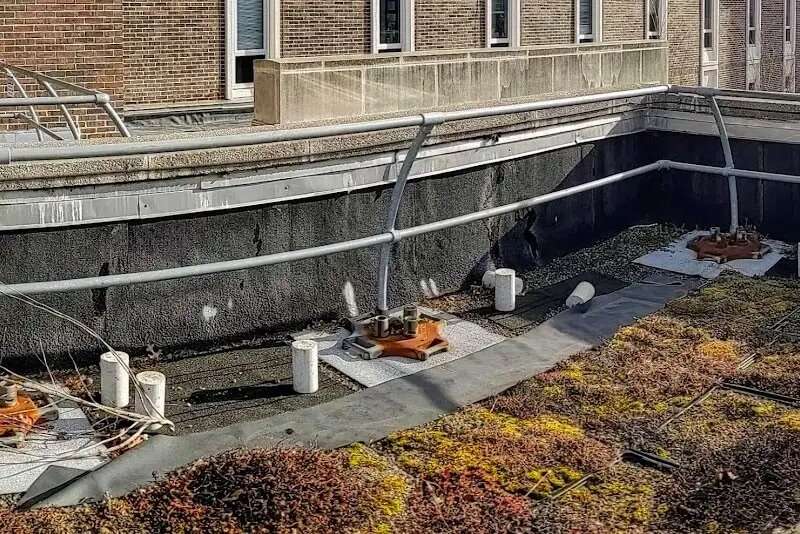
"There was really nothing at all known about microbes in concrete," she said. "It's the most commonly used building material in the world, but we just don't know anything about what lives in there. It's in wet environments, sewer systems, bridge pilings and we know that microbes on surfaces can degrade it. But what's in there and does it do anything? Can it tell us anything?"
Why, yes. It can.
To get useful information, though, researchers must screen out extraneous data from contaminants and be sure the bacteria analyzed were those associated with the concrete. That included detecting and excluding contaminants.
"DNA can come from a lot of different places," said Anders Kiledal, a doctoral student in Maresca's lab and the first author on the paper. "Animals, people and the environment can introduce certain types of contaminants, but there is also contamination from the actual reagents you are using. We're trying to get samples as pure as possible."
No one sterilizes the raw materials of concrete, of course—not the sand, gravel or creek water they may have passed through.
"Each has its own microbiome," Maresca said. "Most bacteria in concrete are coming in with the large aggregates and the cement powder."
How bacteria survive in such inhospitable areas is a question of keen interest.
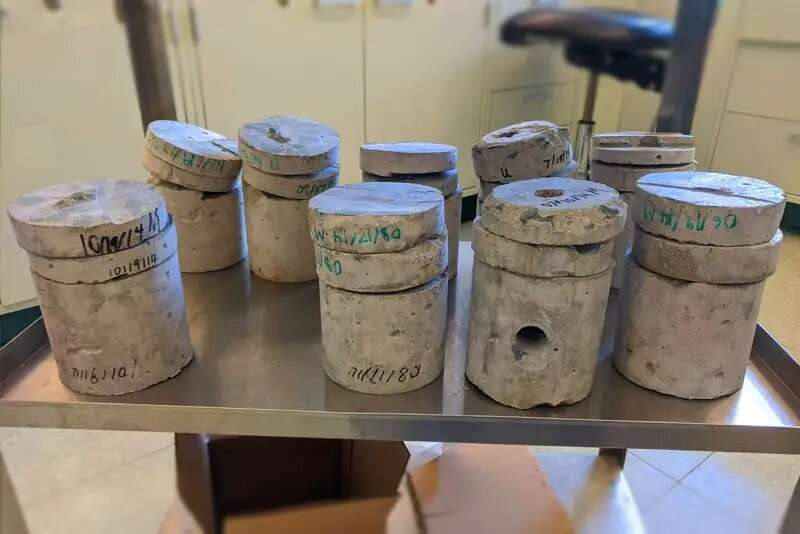
"What are they eating?" Maresca said. "It's possible they're eating the dead bodies of other microbes. If there's nothing to eat, some of them can form spores or form a dormant cell type and do nothing until it rains, then eat as much as they can and go dormant again."
Studying these bacterial communities and their survival methods could give civil engineers and others critical information about the condition of many structures. Maresca said the goal is to identify which bacteria indicate a normal concrete environment and which show that the concrete is damaged in some way.
With that kind of early-warning system, transportation officials can prioritize repairs and replacements and shape their budgets accordingly.
"The earlier you can detect a problem, the more time you have to solve a problem before it becomes a real problem," she said. "And since we have all these roads and bridges at risk, we need a way to prioritize them. Which are in dire need and which aren't?"
Before diagnoses can be made, more work is needed to identify the correlation of specific kinds of bacteria and concrete damage, not because the bacteria are causing the damage, but because their presence indicates damage is happening.
"As far as we know, the microbes are not damaging the concrete," Maresca said. "Microbes are not eating the foundations. We're hoping to use them for information and potentially to help with repair."
Kiledal has worked with the Delaware Department of Transportation (DelDOT) and the New Jersey Department of Transportation (NJDOT) to collect field samples. In the next phase of the study, Kiledal and Maresca are analyzing DNA extracted from bridges, roads and foundations in Delaware and New Jersey.
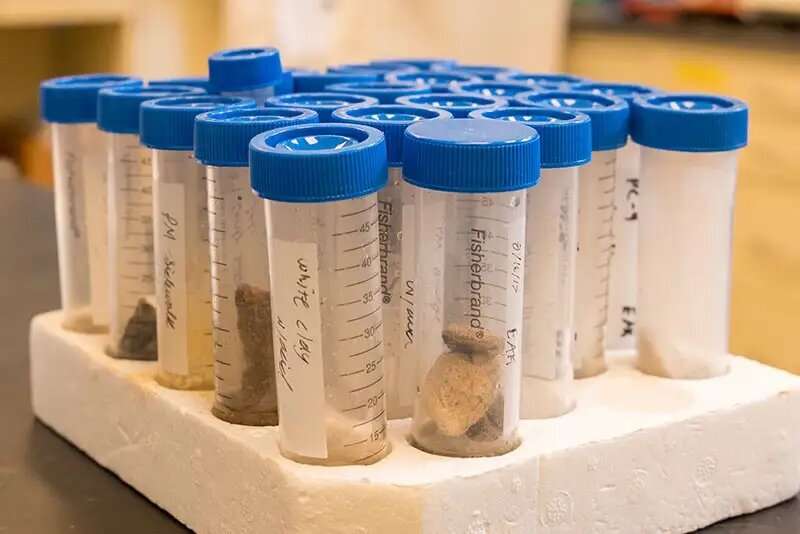
"Now our information is more complete," Maresca said. "We have field samples from roads and bridges and we have sequenced all of the DNA. Do these microbes survive in salty environments? Dry environments? What kind of carbon do they use?"
The work was supported with funding from the Delaware Department of Transportation and by the Delaware Environmental Institute.
There are many other potential frontiers for similar studies—stone monuments, desert soils, even the red rocks on Mars.
More information: E. Anders Kiledal et al, Bacterial Communities in Concrete Reflect Its Composite Nature and Change with Weathering, mSystems (2021). DOI: 10.1128/mSystems.01153-20
Provided by University of Delaware





















